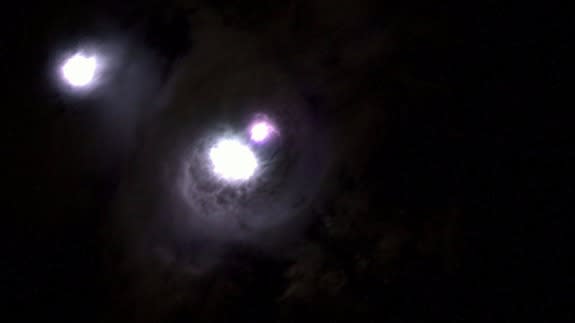'Spooky' lightning reveals a skull face, as seen from the Space Station

Astronauts see a lot of amazing things when staring down at Earth from space.
People on the International Space Station have taken photos of planes flying above Earth, auroras, cities lit by night and other surreal views that only a person 250 miles high can see.
SEE ALSO: British astronaut Tim Peake proves he's your space dad on Twitter
But some images taken by astronauts all alone in the night are also pretty creepy.
For example, British astronaut Tim Peake recently snapped a photo of lightning flashing in clouds on the planet.
“Sometimes looking down on Earth at night can be kinda spooky," Peake said in a tweet about the lightning photo.
The photo shows three simultaneous lightning strikes illuminating storm clouds in a pattern that resembles the eye sockets on a skull.
Peake is making a habit of sharing his views of lightning from the Space Station.
In February, Peake shared a video on Instagram showing thunderstorms flickering above the planet.
Peake is far from the first astronaut to capture an image of lighting from the Space Station.
In fact, lightning is one of the most photographed phenomenon from the ISS.
NASA astronaut Scott Kelly — who recently returned to Earth after spending 340 straight days in space — captured some photos of lighting produced by a storm that also caused blizzard conditions from Washington, D.C., to New York City.
In 2014, NASA's Reid Wiseman posted a video to Vine showing an intense looking lightning storm above Houston, Texas.
Many other astronauts have also taken photos of lightning from the Space Station's vantage point, even catching a glimpse of rare red jets shooting upward from towering thunderheads.

Image: NASA

Image: NASA

Image: NASA
Scientists have used sensors aboard various spacecraft to track lightning from above.
The Lightning Imaging Sensor on the EOS TRMM satellite, for example, tracked lightning in the tropics, producing a global map of lightning strikes as seen from orbit.
The EOS TRMM launched in 1997, but its mission came to an end in 2014.

